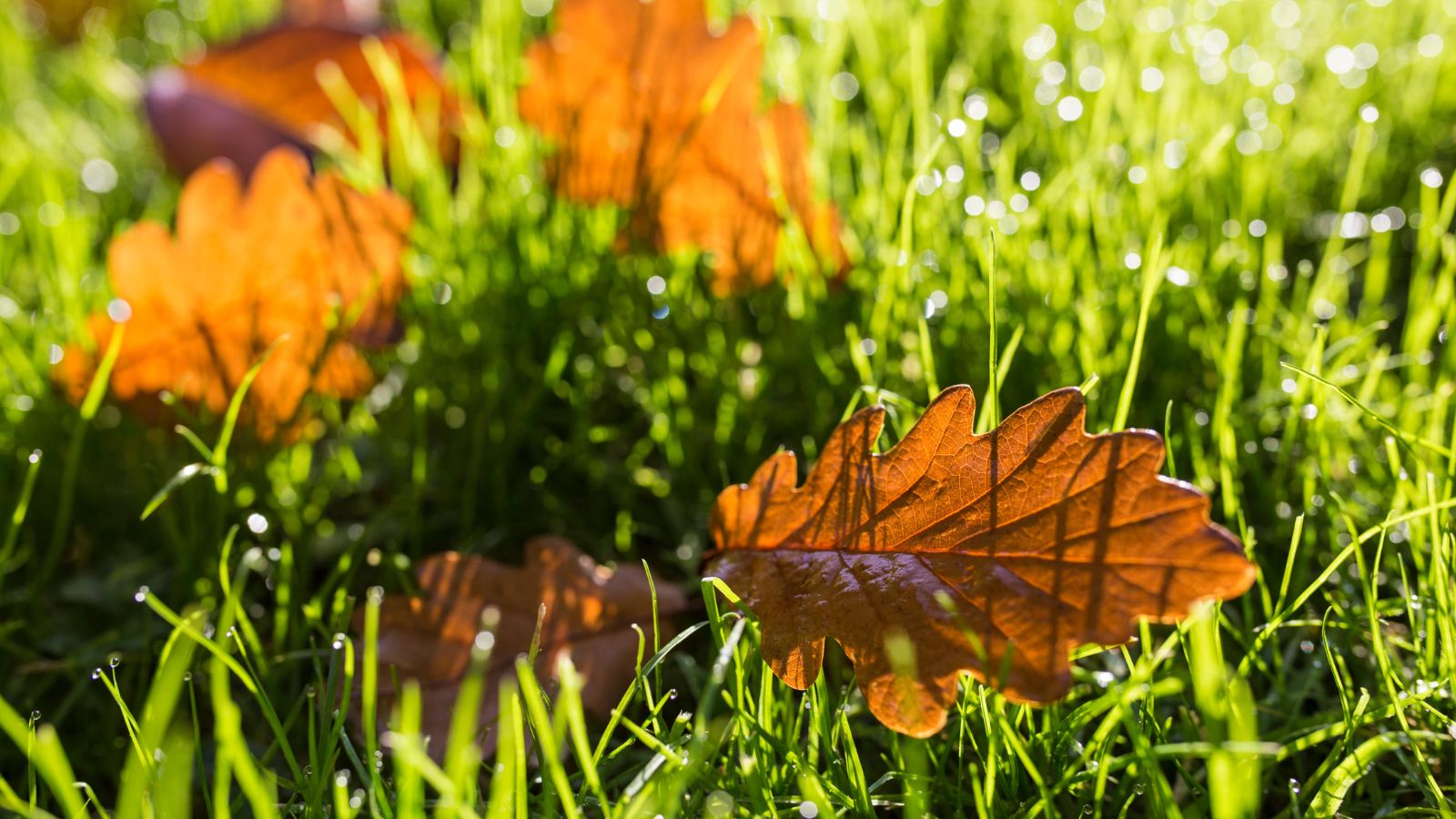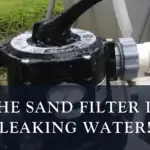Have you ever wondered if you’re overwatering your grass or missing the perfect moment to stop? You’re not alone.
Finding the right balance in watering can be tricky, but it’s crucial for a lush, green lawn. Too much water can lead to disease and a swampy mess, while too little can turn your grass brown and brittle. This blog post will guide you through the signs and strategies to know precisely when it’s time to stop watering your grass, ensuring it stays healthy and vibrant.
By the end, you’ll feel confident about your lawn care routine and ready to take the guesswork out of watering. Dive in to discover the secrets of achieving the perfect lawn!

Credit: www.homesandgardens.com
Signs Your Grass Needs Less Water
Grass turning a dull green or showing signs of wilting can indicate overwatering. Soil feeling consistently damp is another clue to reduce watering. Regularly check these signs to know when to stop watering your lawn.
Knowing when to stop watering your grass can be a bit tricky, but understanding the signs is crucial for maintaining a healthy lawn. Overwatering can lead to various issues that not only affect the appearance of your grass but also its health. Being mindful of these signs ensures your lawn stays lush and vibrant. Let’s dive into the key indicators that your grass might need less water.Yellowing Leaves
Have you noticed that your grass is turning yellow despite your diligent watering schedule? This could be a sign that your lawn is getting too much water. When grass receives more moisture than it needs, it can cause nutrient leaching, leading to yellowing leaves. Think of your lawn like a sponge; it can only hold so much water. When it’s oversaturated, it can’t take in nutrients effectively. So, if your grass looks more yellow than green, it might be time to cut back on the watering.Mushy Soil
Check the soil in your yard. Does it feel mushy or waterlogged underfoot? This is a clear sign that your lawn is drowning in too much water. Mushy soil can suffocate the roots of your grass, preventing them from getting the oxygen they need. It’s like trying to breathe through a wet blanket—uncomfortable and suffocating. If stepping on your grass feels more like walking on a sponge than solid ground, it might be time to let it dry out a bit. Adjusting your watering schedule can help restore balance and promote healthy growth. By staying alert to these signs, you’re not just saving water but also ensuring your lawn thrives. How often do you evaluate your watering habits? It might be the key to a greener, healthier yard.Optimal Watering Times
Knowing when to water your grass is crucial for its health. Timing plays a key role in ensuring your lawn thrives. Watering at the right time helps grass absorb moisture effectively. It also prevents water wastage and keeps your lawn green.
Early Morning Watering
Watering in the early morning is highly effective. The cool temperatures allow the soil to absorb water properly. This prevents evaporation and ensures your grass gets enough moisture. Morning watering also supports deep root growth. It prepares your lawn to withstand the day’s heat. The grass stays hydrated and healthy.
Avoiding Midday Heat
Midday watering is not ideal for your lawn. The sun is strongest during this time. Water evaporates quickly, leaving your grass thirsty. It can lead to wasted water and higher costs. Avoid watering during peak heat hours. This ensures your grass receives the moisture it needs. Choosing the right time protects your lawn from stress.
Adjusting For Seasonal Changes
Grass needs less water as temperatures drop. Pay attention to cooler days and frequent rainfall. Watering can usually stop when frost arrives or the ground freezes, ensuring the grass enters dormancy properly. Adjust watering schedules according to your local climate and seasonal changes.
Adjusting for seasonal changes is crucial in maintaining a lush, healthy lawn. As the seasons shift, your grass’s water needs fluctuate. Understanding these changes can save water and keep your lawn vibrant.Spring Watering Adjustments
Spring is a time of growth and renewal. As temperatures rise, your lawn wakes up from its winter slumber. But how much water does it really need? Begin by observing your grass. If it springs back after you step on it, it’s hydrated enough. Overwatering can lead to shallow roots and weeds. Consider using a rain gauge. Spring showers often provide enough moisture. You might be surprised at how little additional watering is needed.Summer Conservation Techniques
Summer heat can stress your lawn. However, strategic watering can help it thrive despite the scorching sun. Water early in the morning. This reduces evaporation and ensures water reaches the roots. Evening watering can encourage diseases due to prolonged moisture. Mow your grass higher. Taller blades provide shade for roots and reduce water loss. Adjust your mower to a higher setting and see the difference.Fall Preparation
As fall approaches, your lawn’s needs change once more. This season is key for preparing your grass for winter. Reduce watering gradually. Cooler temperatures mean less evaporation, and your grass needs less water. This helps prevent disease and keeps your lawn healthy. Consider aerating your lawn. This allows water to reach deeper into the soil, encouraging stronger roots. Strong roots are vital for surviving winter’s chill. Are you adjusting your lawn care to suit the seasons? It’s more than just a task; it’s an art. Applying these practical insights can transform your lawn care routine and save resources. What changes will you make this season?:max_bytes(150000):strip_icc()/GettyImages-630966503-e1415481703d4088869f1e2561be7256.jpg)
Credit: www.marthastewart.com
Watering During Drought
Watering grass during a drought requires careful planning. Limited water resources demand strategic use. This helps maintain a healthy lawn without waste. Understanding when to water is crucial. It can significantly impact your grass’s survival.
Implementing Water Restrictions
During droughts, water restrictions often come into play. These limitations help conserve precious water. Local authorities may set specific watering days. Follow these guidelines strictly to avoid penalties. Use water efficiently to keep your lawn alive.
Early morning is the best time to water. It reduces evaporation losses. This ensures more water reaches the roots. Avoid watering in the afternoon. The sun quickly evaporates moisture.
Choosing Drought-resistant Grass
Drought-resistant grasses save water. They require less frequent watering. Varieties like Bermuda and Zoysia thrive in dry conditions. They adapt well to limited water supply. These grasses have deep root systems. This allows them to access moisture deep in the soil.
Consider overseeding with drought-tolerant species. It can improve your lawn’s resilience. This choice supports a lush lawn even in droughts. It’s a smart and sustainable solution.
Impact Of Overwatering
Overwatering grass can lead to unhealthy roots and soil erosion. Timing is crucial to prevent waterlogging and disease. Proper watering schedules ensure lush lawns without waste.
Impact of Overwatering Overwatering your grass might seem like a harmless mistake, but it can have significant consequences. Many homeowners assume that more water equates to healthier grass, but this isn’t the case. Overwatering can lead to a host of problems that not only affect the appearance of your lawn but also its long-term health.Disease And Pest Risks
Excessive moisture creates a breeding ground for diseases and pests. Fungal diseases thrive in damp conditions, leading to issues like brown patch and powdery mildew. These diseases can quickly spread, leaving unsightly patches and weakening your lawn’s overall health. Moreover, pests such as grubs and mosquitoes are attracted to wet environments. They can cause significant damage by feeding on grass roots or becoming a nuisance to your outdoor activities. Have you noticed an increase in mosquitoes when your lawn stays wet for days? That’s your cue to rethink your watering schedule.Soil Erosion
Too much water can cause your soil to erode. When soil becomes overly saturated, it can start to wash away, especially during heavy rains. This leads to uneven surfaces and exposes grass roots, making them vulnerable to damage. Erosion not only affects the appearance of your lawn but can also impact the foundation of structures like patios and walkways. Imagine dealing with a patio that starts to sink because of poor lawn care practices. That’s a headache you can avoid by simply moderating your watering habits.Are you confident that your watering habits are helping rather than hurting your lawn? It’s time to take a closer look at the signs and adjust accordingly. Consider using a rain gauge or moisture meter to better manage your lawn’s needs. Your grass will thank you with lush, healthy growth.
:strip_icc()/GettyImages-1300493626-439c4e18253e459c876b1796d0874622.jpg)
Credit: www.bhg.com
Using Technology For Watering
In today’s fast-paced world, using technology for watering your grass isn’t just a luxury—it’s a necessity. Gone are the days of guessing how much water your lawn needs. Now, with smart irrigation systems and weather-based adjustments, you can ensure your grass gets just the right amount of water. This not only helps conserve water but also saves you time and money. So, why not let technology do the heavy lifting?
Smart Irrigation Systems
Imagine you never have to worry about manually turning on your sprinklers. Smart irrigation systems allow you to automate the entire process. These systems use sensors and timers to deliver water precisely when your lawn needs it. You can control them through your smartphone, even if you’re miles away.
Think about the ease of adjusting your watering schedule on a whim. Say you plan a weekend getaway. Simply set the system to water less frequently while you’re away. Smart systems can also detect leaks, ensuring you never waste water.
Do you often forget to turn off the sprinklers after a rainstorm? These systems can integrate with weather forecasts, making adjustments automatically. This means your grass gets the perfect amount of water, rain or shine.
Weather-based Adjustments
Why water your lawn after a heavy downpour? Weather-based adjustments can help you make smarter decisions. By syncing with local weather data, your irrigation system can skip watering cycles when rain is forecasted.
Consider how this can help save resources. If your area is experiencing a drought, you can reduce watering times without compromising the health of your lawn. It’s all about maintaining balance and being environmentally responsible.
Are you curious about how this technology works? These systems use algorithms to analyze weather patterns and adjust watering schedules accordingly. You’re not just watering; you’re nurturing your grass with precision and care.
By using technology for watering, you not only streamline your gardening routine but also contribute to sustainability. Isn’t it time to ask yourself if your lawn care methods are as efficient as they could be?
Frequently Asked Questions
How Do I Know When To Stop Watering Grass?
Grass color changes from bright green to dull. Soil feels dry. Check the weather forecast for rain.
Is It Okay To Stop Watering Grass In Winter?
Yes, grass goes dormant in winter. It needs less water. Avoid watering when ground is frozen.
Can Overwatering Damage My Lawn?
Yes, overwatering causes root rot. It can attract pests and diseases. Water only when necessary.
How Often Should I Water Grass In Fall?
Water once a week if there’s no rain. Cooler temperatures mean less evaporation. Adjust based on rainfall.
What Happens If I Stop Watering Grass Too Early?
Grass may turn brown or go dormant early. Wait until temperatures consistently cool before stopping.
Conclusion
Knowing when to stop watering grass is essential for healthy lawns. Overwatering can harm roots and waste water. Observing grass color and soil moisture helps decide when to pause. Yellowing grass often signals too much water. Dry, crumbly soil indicates the need for watering.
Adjusting your watering routine promotes stronger grass. Healthy grass withstands drought and pests better. Regular checks ensure you’re providing just the right amount. This balance saves water and supports a thriving lawn. Remember, a little attention goes a long way.
Keep these tips handy for a lush, green yard year-round.




